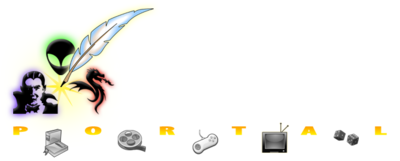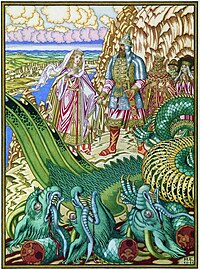Portal:Speculative fiction/Fantasy

Selected fantasy work
Alice's Adventures in Wonderland (commonly shortened to Alice in Wonderland) is an 1865 novel written by English author Charles Lutwidge Dodgson under the pseudonym Lewis Carroll. It tells the story of a girl named Alice who falls down a rabbit hole into a fantasy world populated by peculiar and anthropomorphic creatures. The tale is filled with allusions to Dodgson's friends. The tale plays with logic in ways that have given the story lasting popularity with adults as well as children. It is considered to be one of the best examples of the "literary nonsense" genre, and its narrative course and structure have been enormously influential, especially in the fantasy genre.
Alice was written in 1865, exactly three years after the Reverend Charles Lutwidge Dodgson and the Reverend Robinson Duckworth rowed in a boat up the River Thames with three young daughters of Henry George Liddell: Lorina Charlotte Liddell, Alice Pleasance Liddell, and Edith Mary Liddell. Most of the book's adventures were based on and influenced by people, situations and buildings in Oxford and at Christ Church. It is believed that a carving of a griffon and rabbit, as seen in Ripon Cathedral, where Carroll's father was a canon, provided inspiration for the tale. The journey had started at Folly Bridge near Oxford and ended five miles away in the village of Godstow. To while away time, the Reverend Dodgson told the girls a story that, not so coincidentally, featured a bored little girl named Alice who goes looking for an adventure. The girls loved it, and Alice asked Dodgson to write it down for her. After a lengthy delay—over two years —he eventually did so and on 26 November 1864 gave Alice the handwritten manuscript of Alice's Adventures Under Ground, with illustrations by Dodgson himself. Fantasy topics
Related Portals |

